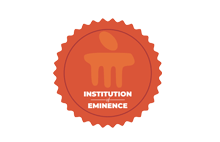Computational-Based Polyphenol Therapy for Nonsmall Cell Lung Cancer: Naringin Coamorphous Systems for Solubility and Bioavailability Enhancement
Document Type
Article
Publication Title
Molecular Pharmaceutics
Abstract
In this research, we utilized molecular simulations to create co-amorphous materials (CAMs) of ceritinib (CRT) with the objective of improving its solubility and bioavailability. We identified naringin (NRG) as a suitable co-former for CRT CAMs based on binding energy and intermolecular interactions through computational modeling. We used the solvent evaporation method to produce CAMs of CRT and NRG, expecting to enhance both solubility and bioavailability simultaneously. The solid-state characterization using techniques like differential scanning calorimeter, X-ray powder diffraction, and Fourier-transform infrared spectroscopy affirmed the formation of a single amorphous phase and the presence of intermolecular interactions between CRT and NRG in the CAMs. These materials remained physically stable for up to six months under dry conditions at 40 °C. Moreover, the CAMs demonstrated significant improvements in the solubility and dissolution of CRT (specifically in the ratio CRT:NRG 1:2). This, in turn, led to an increase in cytotoxicity, apoptotic cells, and G0/G1 phase inhibition in A549 cells compared to CRT alone. Furthermore, CRT permeability is also improved twofold, as estimated by the everted gut sac method. The enhanced solubility of CAMs also positively affected the pharmacokinetic parameters. When compared to the physical mixture, the CAMs of CRT:NRG 2:1 exhibited a 2.1-fold increase in CRT exposure (AUC0-t) and a 2.4-fold increase in plasma concentration (Cmax).
First Page
3951
Last Page
3966
DOI
10.1021/acs.molpharmaceut.4c00303
Publication Date
8-5-2024
Recommended Citation
Yarlagadda, Dani Lakshman; Das, Subham; Anand Vullendula, Sai Krishna; and Manandhar, Suman, "Computational-Based Polyphenol Therapy for Nonsmall Cell Lung Cancer: Naringin Coamorphous Systems for Solubility and Bioavailability Enhancement" (2024). Open Access archive. 10165.
https://impressions.manipal.edu/open-access-archive/10165


